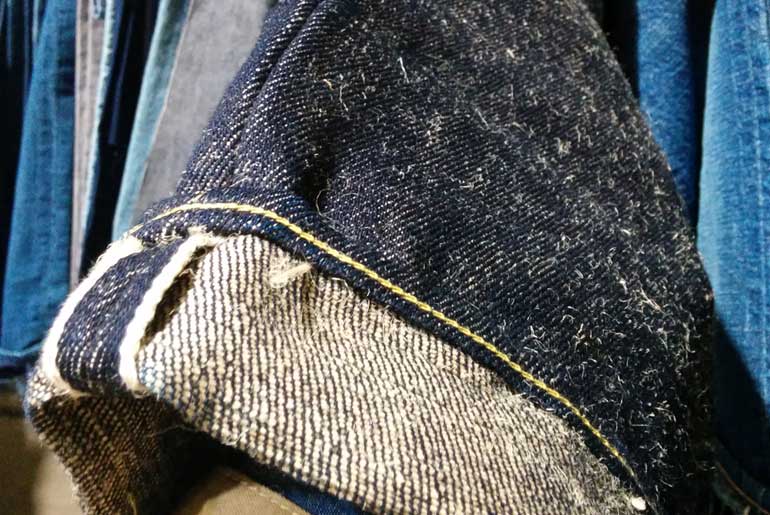Ever wondered why your favorite pair of jeans or go-to sweater gets fuzzy or looks hairy? To some, it can be annoying, so understanding its main causes and how companies and individuals combat fuzziness (a.k.a. shedding or pilling) can help keep your wardrobe looking sharp. Let’s delve into the primary reasons behind fabric fuzziness and explore some strategies for reducing it.
1. Staple Length – The Foundation of Fabric

Staple length refers to the length of the fibers used to make fabric. Different materials have varying staple lengths, with cotton typically ranging from 0.5 to 2 inches, wool from 1.5 to 6 inches, and linen around 1 to 2 inches. Staple length is crucial for determining fabric quality, strength, durability, and texture.
Staple length, or the length of individual fibers used to make fabric, is important when predicting or understanding fuzziness. Shorter staple lengths, commonly found in fabrics like cotton, are more prone to shedding fibers, resulting in a fuzzier texture. On the other hand, longer staple lengths contribute to stronger, more resilient fabrics that are less likely to fray over time.
2. Friction

Friction is another major factor contributing to fabric fuzziness. Regular rubbing or abrasion against surfaces, such as furniture or body parts, can cause the fibers to loosen and protrude from the fabric’s surface.
3. Washing and Drying
Aggressive washing and drying methods can exacerbate fabric fuzziness by weakening the fibers and causing them to fray. To minimize fuzziness, it’s essential to use gentle detergents, use low-temperature wash cycles, and avoid excessive agitation during laundering. Additionally, air-drying or using low-heat settings can help preserve the quality of the fabric and reduce fuzziness over time.
Solutions:
1. Fabric Quality
Choosing high-quality fabrics made from longer staple fibers is key to minimizing fuzziness. These fabrics are more tightly bound together, making them less prone to shedding fibers and developing a fuzzy texture. Companies that prioritize quality materials and meticulous craftsmanship – produce garments that stand the test of time and maintain their smooth appearance wear after wear.
2. Hands-On / Physical Methods

In addition to selecting quality materials, individuals and manufacturers can employ innovative techniques to minimize fabric fuzziness. Singeing is one method used to remove protruding fibers from the fabric’s surface using flame or high temperatures. If you are deploying this method, use extreme caution, as the open flame can cause harm to your garment or to you. People also use fabric shavers, a more common method, which use blades to shave away the protruding fuzz. Again, use caution with fabric shavers as they can catch and cause a hole within the fabric.
Other approaches companies take during the manufacturing stages include – different anti-pilling finishes, which prevent the formation of fuzz balls or protruding hairs on the fabric, and incorporating durable fibers like polyester or nylon into fabric blends for added strength and resilience.
To Conclude
Fabric fuzziness may seem inevitable, but armed with knowledge and proactive measures, you can keep it at bay. By choosing high-quality fabrics, practicing gentle laundering techniques, and embracing innovative solutions, you can ensure that your clothes remain smooth, stylish, and fuzz-free for years to come.

